From top left (clockwise): Former Magpie president Allan McAlister, Heritier Lumumba, Eddie McGuire, Nicky Winmar in 1993.
Thanks to Russell Jackson’s harrowing article that chronicled the tragic life of former St Kilda player Robert Muir, this year’s Indigenous Round might have a greater role to play than just the AFL’s annual self-congratulatory look at football played at the highest level by indigenous Australians.
Unsurprisingly, the response of Muir’s former club St Kilda was swift, as was that of the AFL, both of which have committed to addressing the effects of the neglect inflicted on the ex-Saint.
Less expected was an apology on Monday by the Collingwood Football Club, which expressed deep regret at the part it had played in the vilification of Muir.
The mea culpa pointed out that Collingwood is currently in the midst of a review of a racist period in its own past, an obtuse reference to the ongoing club inquiry into the claims by former player, Heretier Lumumba, that he was the subject of sustained racism during his 10 years at the club.
The Magpies’ apology to Muir said all the right things, and was as unreserved as it was unexpected. With media savvy Eddie McGuire as front man, Collingwood is more than adept at selling a message.
In all likelihood, the football world will applaud the Magpies for saying sorry and quickly forget the part the club played in the dehumanisation of an indigenous footballer.
Having doused another spotfire, Collingwood will move on. The Magpies will continue to build an empire that marries with their self-proclaimed market position as the ‘biggest sporting club in Australia”. But for anyone serious about addressing past wrongs, Collingwood’s default setting of saying sorry and moving on should no longer be acceptable.
The time has come to shine a light on this major sporting organisation. We should be asking why is one club apologising about its past far more frequently than any other? We should be asking why does Collingwood only acknowledge a past wrong when an aggrieved party goes public? And finally, we should ask if the club is aware of any other instances of racism in the past that are yet to come to light?
Most certainly there have been episodes of racism at all AFL clubs, in particular those that made up the former VFL, but before the Collingwood Football Club and its supporters claim that they are being singled out for unfair treatment, just consider the litany of documented and alleged incidents that set them apart.
Robert Muir outlined his racist treatment at the hands of the Collingwood crowd and claims to have been treated similarly on-field by the Collingwood players.
PLEASE HELP US CONTINUE TO THRIVE BY BECOMING AN OFFICIAL FOOTYOLOGY PATRON. JUST CLICK THIS LINK.
The treatment he received at Victoria Park in 1980 went beyond anything he had experienced in his career, before or after. That afternoon he was reported for striking Collingwood captain Ray Shaw. Muir claims it was in response to being spat on by the Collingwood captain.
As recently as last Sunday, the day Jackson’s article was published, Ray Shaw’s brother, Tony, also a former Collingwood captain, refuted the allegations of spitting. By doing so he is implying that Muir is lying. (It should be noted that at the tribunal hearing into the striking charge against Muir, officiating field umpire Graeme Fellowes stated that there was “saliva floating around”.)
The response of Tony Shaw, still a highly-respected figure at the Collingwood Football Club, runs contrary to the apology issued by the Magpies and in no small way dilutes that apology.
Lumumba’s response to the Muir story was equally telling. He said it had given him the strength to keep fighting for justice and systemic change within the AFL, and had shed light on the “hidden history” of the Collingwood Football Club.
“The club’s well documented, racist history has always been hidden behind the veneer of: ‘We are the biggest and best sporting brand in the country’,” Lumumba tweeted on Tuesday. “If it integrated the truth of its history into its identity, it would pave the way for the necessary humility it needs to transcend its racist reputation.
“Unfortunately, for the time that I was at Collingwood, not one word was uttered about the racist roots of the club’s culture. The unwillingness to examine the past and, learn from it, manifested the racism that I endured for 10 years.”
Muir’s time in league football was marked by constant racial abuse from opposition players, as documented in an article written by The Sun’s Wayne Gregson headlined: “Racism, footy’s professional tactic”.
In the article, the then VFL general manager Jack Hamilton responded to claims of on-field racism by stating to Gregson: “You’re saying it happens. You may be right. I have no evidence of it”. An extraordinary denial from the man who played for 10 years at Collingwood, and was at the time one of the game’s most senior administrators.
Beyond Muir’s experiences, there are a number of other well-documented instances of racist behaviour that have taken place either side of the fence at Victoria Park, as well as a number that emanated from the board room.
Of course, there’s Nicky Winmar’s now-iconic gesture at Victoria Park in 1993, following a torrent of racial abuse from the stands directed at himself and fellow Aboriginal player Gilbert McAdam.
The words of club president Allan McAlister in response to the Winmar incident spoke to a culture of racism at Collingwood that started at the very top.
In a television interview, he said that “indigenous players would be accepted by the community as long as they conduct themselves like white people, well, off the field, everyone will admire and respect them.”
Just six weeks after the Winmar incident at Victoria Park, North Melbourne’s Adrian McAdam, at the same venue, told of the racist abuse he’d received from the crowd as he starred, kicking nine goals in a famous Kangaroo win.
“There was plenty of it,” McAdam said after the game in an interview with Footyology’s Rohan Connolly, covering the match for “The Sunday Age”.
“There was stuff like ‘black c—‘, ‘go and sniff on your petrol’, you know, heaps of words. The more the Collingwood crowd called out racist comments, the more I got pumped up. I kicked nine, so I’m pretty sure that shut them up.”
On to 1995, and the first ANZAC Day match between Essendon and Collingwood. That historic game became even more so when Michael Long announced post-match that he had been racially vilified by Collingwood ruckman Damian Monkhorst during the game.
Long’s claim was subsequently substantiated by the AFL tribunal. Long was hardly the first Aboriginal player to be subject to on-field racism, but he was the first to take a public stand. His courageous stance saw the AFL draft the anti-vilification laws that are now the cornerstone of its policy of inclusion.
It must be recognised that in the 25 years since that incident, Long has acknowledged both Monkhorst’s regret and his sincere efforts to help eliminate racism from the football field.
From 2005 to 2014, alleges Lumumba, there was ongoing racism from within the club, and after that, the role (whilst inadvertent) played by Magpie president McGuire in the racist persecution of Sydney champion Adam Goodes.
The above incidents have been well-documented, but there remains one major element of Collingwood’s racist past that is less talked about and certainly not admitted to by the club.
Ask any keen student of the game which two clubs had an active, if not public “no Aboriginals” policy in their past and you will get the same answer, Hawthorn and Collingwood.
Indeed, former Hawthorn recruiting manager John Turnbull told Rohan Connolly in an article on Chance Bateman for “The Age” in 2008: “There were strong undercurrents of prejudice.”
Turnbull, who recruited Bateman to the club, and watched with pride as he, along with Cyril Rioli and Mark Williams, played key roles in Hawthorn’s 2008 premiership, recalled being welcomed to the Glenferrie fold by a senior figure at the club.
“He said to me (pointing at his forearm): ‘Good luck, John, and just remember, don’t draft anyone with skin darker than mine’.”
The Magpies, however, have never admitted to the fact, so the word allegedly has to accompany any accusation that it had a board level policy that no Aboriginal players be recruited by the club.
In Collingwood’s case, the alleged policy existed until the mid-1990s. The first Aboriginal or Torres Strait Islander to represent the club was Wally Lovett in 1982.
Whilst the club now celebrates him as its first Indigenous player, there was no public acknowledgement in 1982 that Lovett was in fact Aboriginal. After a solid first season with the Pies, during which he played 15 games, Lovett was cleared to Richmond.
It would be 13 years until another Aboriginal footballer, Robbie Ahmat, would pull on the famous black-and-white Collingwood jumper.
It is a fact that the history of the game’s most powerful club is blighted by a culture of racism.
What is now of paramount importance is that Collingwood becomes pro-active in addressing an issue that cannot be resolved by loudly-trumpeted public apologies.
First, confront your past. Then be upfront about any unresolved matters. Appoint members to the board who have a history of cultural sensitivity. And above all, ensure that no vestiges of that sorry past exist now or into the future.

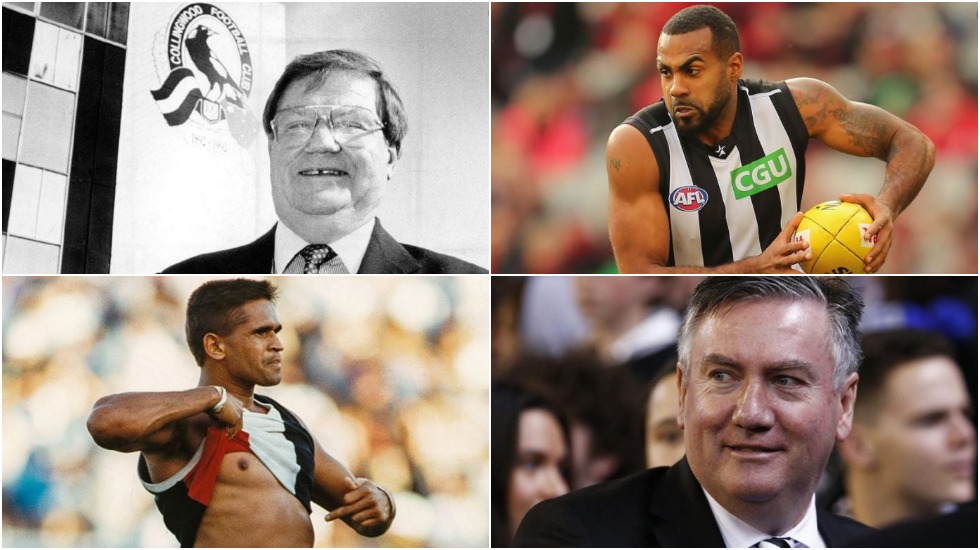
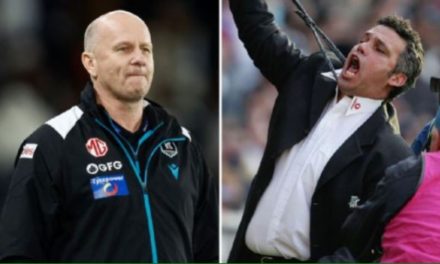
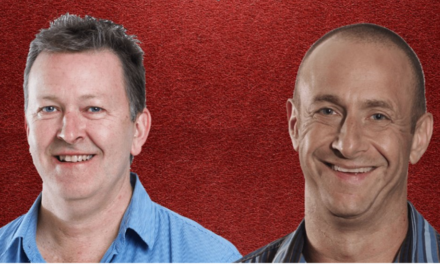
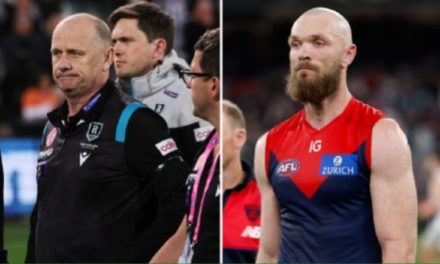
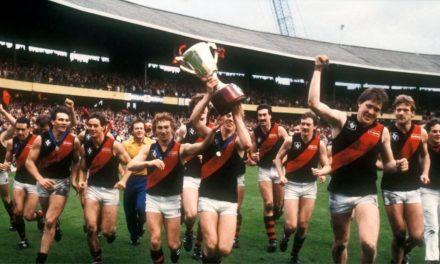






Great piece, Mark.
FYI – https://www.change.org/collingwood
When I was a boy I’d go watch my beloved Saints get beaten each week, so from a young age I learnt its not the winning but having a crack, doing your best. That’s really what it’s all about…..
I watched Robbie Muir from the Moorabbin outer wing ply his trade and moved with such speed, skill and grace ..he was a gun……but, I also watched on whilst all around me the abuse and racism he copped from the opposing supporters and players washed over me like a wave and left me dismayed and angry, ….I saw the sprays of spit being spat in his direction…the cans and bottles thrown…but what could a 12year old boy who was 2 stone wringing wet do?…
I got mum to sew his number 32 on the back of my jumper.
Loyal Saint supporters young and old, male and female smiled at me, patted my head and said go the Sainters and Robbie Muir…..it taught me a lot about right and wrong and character…and to be loyal to those you hold dear…and to stand up to the things you see as wrong and unjust….and I like to think I am still doing it all these years later…
Thank you Robbie Muir and go the Mighty Sainters………rod.
Great article Mark. I think if Australian society more broadly owned up to its hidden histories, particularly its diabolical treatment of indigenous communities we would be better for it. Healing starts with acknowledgement. I didn’t learn about how bad it was until after I’d left high school.
John Greening sued St. Kilda and the coach match committee and a St. Kilda player in 1972 alleging they had planned and carried out the king hit on him behind his back which nearly killed him and affected his earning capacity for the next 15 years. at least.. St. Kilda have never apologised for what they did to him and neither has the perpetrator of the assault. Racism is an awful thing and quite rightly needs to be highlighted where ti occurs and quashed. But despicable acts dont come under just one heading
A single act of thuggery doesn’t speak to a culture that needs addressing. That being said I have had the privelageviinterviewing John and his story is beyond tragic. That vicious act by Jim O’Dea cost John a great career, a marriage and a healthy life. I would have thought the AFL and St. Kilda could play a part in making John’s life more comfortable even today.
Maybe Mark Fine can now write a scathing exploration of his very own St. Kilda’s mistreatment of Muir.
Powerful piece, Mark. This is no right/left culture war/partisan debate,or even a debate. Its simply about affording the most basic decency/respect, and that has no side or ideology. All power to Footyology for taking this on..
Thank you Eric. Opening supporters eyes to the less savoury aspect of their club’s past is always going to meet with resistance but at least they have been exposed to the uncomfortable truth.